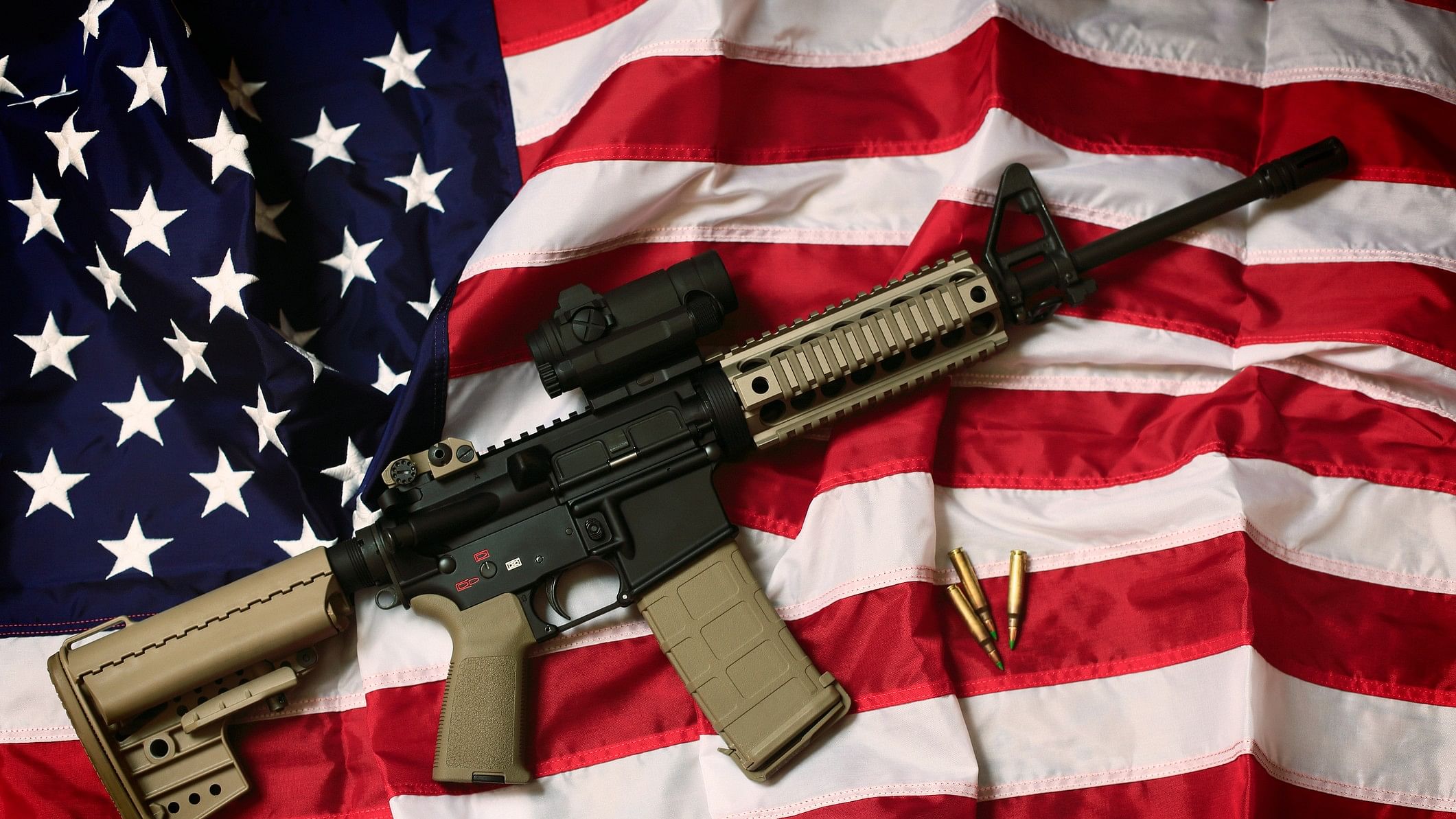
AR-15 placed on the US flag
Credit: iStock Photo
By Noah Feldman
In a major development in the struggle to control mass shootings, the US Court of Appeals for the Fourth Circuit has upheld Maryland’s assault weapons ban as constitutional. The ruling, like a preliminary Seventh Circuit ruling involving an Illinois ban, differs from the recent ruling by a federal district court to strike down New Jersey’s ban. Eventually, the issue is sure to reach the Supreme Court.
The masterful opinion for the whole court, sitting en banc as a single body, was written by Judge J. Harvie Wilkinson III, a Reagan appointee who is one of the most broadly respected appellate judges in the country. It lays out a roadmap for the Supreme Court to follow by explaining clearly that AR-15s are favored by terrorists and other mass shooters; that they are not suitable for self-defense; and that the framers of the Constitution would have welcomed their regulation, just as they embraced laws that protected Americans against analogous dangers.
What makes the opinion so important is that it scrupulously applies the Supreme Court’s precedent and logic, including the controversial 2022 Bruen decision and the more defensible 2024 Rahimi decision (which narrowed the Bruen precedent). In consequence, the opinion cannot be ignored by the swing faction of conservatives made up of Chief Justice John Roberts and Justices Brett Kavanaugh and Amy Coney Barrett. Indeed, it could become one of those rare appellate opinions that directly shapes the course of US constitutional law.
The key starting point of Wilkinson’s opinion is its correct observation that when the late Justice Antonin Scalia initiated modern Second Amendment jurisprudence in the 2008 case called District of Columbia v. Heller, he based the right on personal self-defense. In truth, Scalia was pulling a historical fast one: The actual original purpose of the amendment, written into its explicit text, was to ensure that citizens could participate in well-regulated state militias. But even Scalia recognized the absurdity of using the Second Amendment to enable citizens to carry the weapons needed to fight wars on behalf of a modern army — so he re-made the right to bear arms as an individual right to protect yourself and your home.
AR-15s aren’t self-defense weapons, as Wilkinson’s opinion amply demonstrates. They are ultra-dangerous offensive weapons, “the most popular arms for terrorist attacks in the US.” Alongside AK-47s, they have “been used in every major terrorist attack on US soil in the last decade,” he writes. Wilkinson is not making a policy point but a constitutional one: AR-15s aren’t covered by the right to bear arms because they aren’t used in self-defense.
The opinion also makes short work of the idea, adopted recently by a federal district court judge in New Jersey, that AR-15s have a self-defense purpose because some people keep them at home in the belief that they could use them against intruders. Wilkinson describes why AR-15s are unsuitable for self-defense at home: Their bullets go through everything. If you tried to use an assault weapon against an intruder, you could easily kill your family and neighbors. The big magazines associated with the weapons are also not appropriate for self-defense, he adds. (Yes, the Supreme Court just ruled 6-3 that bump stocks can’t be regulated as machine guns under federal law; but this case was about the very different legal question of whether it is constitutional for states to ban semiautomatic rifles.)
This directness and common sense brings Wilkinson to the analysis required by the Bruen and Rahimi cases: whether there exists a historical analogue to the Maryland assault weapons ban. Noting that Roberts, in his Rahimi opinion, said the analogue need not be a “dead-ringer” or “historical twin,” Wilkinson acknowledges that the framers knew nothing of mass shootings occasioned by modern firearms technology. “It would have been shocking to the Framers to see the mass shootings of our day,” he writes, detailing the horrific scenes of violence in places like Parkland and Sandy Hook.
But he then points out that gunpowder, “which could kill many people once ignited,” was subject to legal strictures. So were “excessively dangerous weapons” like Bowie knives, “slungshots,” sword canes and “metal knuckles.” Later, legislatures regulated dynamite and Tommy guns.
Wilkinson’s punchline is devastating to those who would rely on the Bruen “history and tradition” test to protect AR-15s: History, he concludes, contains “a strong tradition of regulating those weapons that were invented for offensive purposes and were ultimately proven to pose exceptional dangers to innocent civilians.” That is the master analogy that fully satisfies the Bruen and Rahimi tests, and is also logically sound. AR-15s are modified weapons of war. The Second Amendment does not and must not make it a fundamental right to own them, any more than it should protect machine guns or grenades.
Wilkinson has been a judge since 1984. Conservatives and liberals alike acknowledge his doctrinal subtlety and commitment to following precedent. He’s a model of what a reasonable conservative jurist used to be — and could be again, if the centrist conservative faction of the Supreme Court will rein in the revolutionary chaos it unleashed with decisions like Bruen.